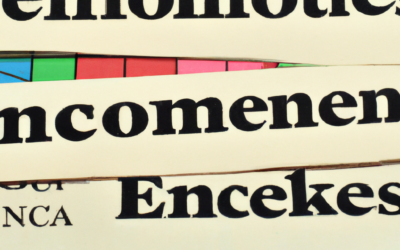FDIC Implements Special Assessment to Recover Losses from SVB and Signature Bank
The FDIC has recently implemented a special assessment to recover losses from the failures of Silicon Valley Bank (SVB) and Signature Bank. This move is in response to the systemic risk exception invoked by the Secretary of the Treasury on March 12, 2023, to protect all uninsured depositors of these banks.
The final rule for the special assessment largely remains unchanged from the proposed rule. The assessment base will be equal to the amount of uninsured deposits reported by an insured depository institution (IDI) for the quarter ending December 31, 2022, minus up to $5 billion of uninsured deposits at the IDI or the banking organization in aggregate. The special assessment will be collected over eight quarters, with the first collection period starting from January 1, 2024, to March 31, 2024.
Background on FDIC’s obligation to recover DIF losses
The FDIC is mandated by statute to recover any losses incurred by the Deposit Insurance Fund (DIF) after the use of the systemic risk exception. The DIF is also required to maintain a minimum reserve ratio of 1.35% of the net worth of the DIF to the value of the aggregate estimated insured deposits. In response to the COVID-19 pandemic, the DIF fell below the required reserve ratio, leading the FDIC to adopt a restoration plan in September 2020.
The final rule for the special assessment aims to recover an estimated loss of approximately $16.3 billion, an increase from the initial estimate of $15.8 billion. IDIs will be assessed 13.4 basis points annually, up from the proposed 12.5 basis points. The assessment base will include each IDI’s estimated uninsured deposits in the December 31, 2022, call report, excluding the first $5 billion of uninsured deposits.
Changes from the proposal
The final rule incorporates some important changes based on feedback and comments received. One notable change is the application of any amendments made to correct the reporting of estimated uninsured deposits. Under the final rule, amendments made after the adoption of the final rule will be taken into account in calculating the special assessment rate or base.
Additionally, adjustments have been made regarding mergers, consolidations, and terminations of deposit insurance. The final rule clarifies that if the special assessment period is extended beyond eight quarters or if a one-time final shortfall assessment is imposed, an acquiring bank’s assessment base will not be adjusted for mergers or failures that occurred after the adoption of the final rule. Furthermore, any bank that voluntarily terminates its insured status after the final rule is adopted will still be required to pay its share of the special assessment.
Comments and concerns
Although various commenters suggested changes to the special assessment base, the FDIC retained the proposed base of all uninsured deposits. The rationale behind this decision is that larger banking organizations, which hold higher amounts of uninsured deposits, benefited the most from the systemic risk determination.
The FDIC also rejected suggestions to restructure the special assessment as a prepaid expense, opting for the recognition of a liability and related expense for the entire special assessment in Q4 2023.
Conclusion
The FDIC’s implementation of the special assessment aims to recover losses from the failures of SVB and Signature Bank. The final rule largely maintains the proposed rule with some important modifications. With the special assessment becoming effective on April 1, 2024, IDIs will be assessed 13.4 basis points annually over eight quarters to recover an estimated loss of approximately $16.3 billion. The FDIC will continue to monitor the progress of the special assessment and may make further adjustments if necessary.
Frequently Asked Questions
Q: What is the purpose of the special assessment implemented by the FDIC?
A: The special assessment is designed to recover losses incurred by the DIF as a result of the failures of Silicon Valley Bank and Signature Bank.
Q: How will the special assessment be calculated?
A: The assessment base will be equal to the uninsured deposits reported by an insured depository institution for the quarter ending December 31, 2022, minus up to $5 billion of uninsured deposits.
Q: When will the special assessment be collected?
A: The special assessment will be collected over eight quarterly assessment periods, starting from the first quarter of 2024. The first payment will be due on June 28, 2024.
Q: Will the special assessment have an impact on all banking organizations?
A: The special assessment will apply to 114 banking organizations, including 48 with total assets over $50 billion and the remainder falling on banking organizations with total assets between $5 and $50 billion.
Q: Can IDIs make amendments to their call reports that affect the special assessment rate or base?
A: Yes, any amendments made to correct the reporting of estimated uninsured deposits will be taken into account in calculating the special assessment.
Q: Will the special assessment be extended beyond eight quarters?
A: The FDIC retains the flexibility to extend the special assessment period or impose a one-time shortfall assessment if needed to fully recover the losses to the DIF.
For more information about banking services and solutions, please visit [VisBanking](https://visbanking.com/).
Sources:
– FDIC finalizes $16.3 billion special assessment to recover loss from SVB and Signature Bank failures – Davis, Polk & Wardwell LLP.
– [VisBanking Pricing](https://visbanking.com/pricing/)
– [Request a demo](https://visbanking.com/request-demo/)






0 Comments